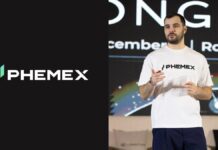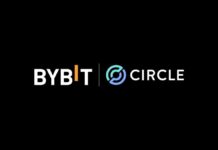
The Initial Coin Offering (ICO) has been so often referred to as fraud, hype, and delusion – but it is still very successful in providing projects with capital. Brave set a new record with the Basic Attention Tokens (BAT): 1.5 billion tokens were sold in 24 seconds for around 36 million dollars. This means that the Brave team has enough capital to realize its vision of a better online advertising business.
The real currency of the Internet is not bitcoin or ethereum, but attention. Clicks, visits, the duration you stay on one side. The advertising industry, which is the true ruler of the network, tries to capture and manipulate this currency through a variety of algorithms, cookies, and so on.
The end of the song is that digital advertising is controlled by middlemen and tracker, who penetrate the privacy of the users. The user pays with his bandwidth and his privacy for advertising, while the creator of a web page, which radiates advertising, thanks to the many middlemen is only a small fraction of the income gets. Most of them remain in those commercial networks, which track the activity of the users.
The browser Brave wants to change this with the Basic Attention Token (BAT). The browser, which has already integrated Bitcoin, first switches all advertising and espionage cookies by means of an integrated ad block. Then he measures the attention that a user of a website devotes and pays the BAT to both users and advertisers. With the token running on the Ethereum Blockchain you can buy a variety of advertisements on the Brave platform whose price is indicated in the attention of the users.
So that is correctly understood: With the BAT involved Brave the users to the advertising revenues. If the users receive only 10 percent of the advertising revenue, which is about $ 100 billion a year, this is one of the largest non-state redistributions in history, and is not much less than the phenomenon of cryptosis itself.
Almost more exciting than the BAT project is the way the developers finance it.
Initial Coin Offering – the crypto method of project financing
Of course, the developers could go to the bank and ask for a credit. They could also get in touch with business angels and beg them monthly to get a few hundred thousand or even millions of dollars for the price that investors have an influence on business activity. The BAT developers, on the other hand, have opted for the crypto variant of fundraising: the ICO.
An Initial Coin Offering (ICO) works as follows: Create a business model that takes place in the context of blockchains and cryptoscripts, and in this, somehow, you bind a currency of your own. Write a whitepaper, raise a platform where people can deposit Ether or Bitcoin, and then write the token to the investors.
So Brave could have simply used bitcoin or ether for it to turn the attention into money. A separate token, on the other hand, has the advantage that it is possible to sell the future services to investors in advance and that they can hoard the vouchers for advertising services at Brave.
Compared to the traditional financing models, an ICO has several advantages: it dispenses entirely with banks and fiat money and is therefore completely unregulated. Thanks to the enormous increase in value of Bitcoin and Ethereum, an ICO gives access to the wallet of a community that has become relatively fast and relatively effortlessly absurdly rich and has an extreme taste for risky investments, crypto tokens and crazy business models. In addition, an ICO does not sell shares, credits, bonuses, options, etc., but sells a product that users can store directly and directly in their wallets. This removes a lot of bureaucracy on the part of the publisher of the token.
Since the Smart Contracts on Ethereum make it extremely easy to form, store and send various tokens, the ICO has risen to the new megatrends of project finance in a relatively short time. The fact that a well-made ICO is able to import single-digit or double-digit millions in a short time is less an exception than the norm. However, even in this climate, such success as the BAT-ICO has achieved is exceptional.
Sold out in seconds
The BAT-ICO lasted only a few seconds. It took place entirely on the Ethereum blockchain, which documents the transactions with which tokens are acquired. The ICO began with block 3,798.64 and ended with block 3,798,642. With average block interwalls of about 15 seconds, the entire financing did not take even a minute. According to observers, it was only 24 seconds.
During this time, 1.5 billion BAT tokens were sold. Each investor receives 6,400 BATs per emitter, which means that sales totaled 156,250 ethers or around 36 million dollars. Actually it was planned to run the ICO for one month. But because the BAT went so fast, the ICO was finished in a few seconds.
In total, more than 12,000 transactions entered into the BAT contract address. Of these, however, only 190 could buy the coveted toes. All other transactions were rejected by SmartContract and canceled with the entry into a block. This flood of transactions has filled all the blocks in the Ethereum blockchain for about six hours and provided for a backlog, as otherwise known only by Bitcoin. The popular block explorer Etherscan has even crashed because many people who participated in the ICO reloaded the page several times per second to see if their transaction has finally landed in a block.
In fact, only those had the chance to become owners of the BATs who had provided their transaction with sufficient gas. There was a fee market. According to an analysis by Codetract.io, someone paid 28.9 ebb (6,600 dollars) in fee, but most of the transactions that made it into the blocks in time have paid much more reasonable fees. At least as important was the timing: transactions that were too early or too late were rejected. They had to be exactly at block 3.798.642.
Unfair distribution
More than in other ICOs before, the BAT ICO was dominated by major investors. Although some managed to buy for amounts like 10 Ether BAT. But the largest parts went to the whales. The two largest investors have surpassed $ 4 million, two more around 2 million, and some more around 1 million. This means that four investors have bought around 50 percent of the tokens.
This led to criticism of the concept of token sales in the general, since the combination of timing and high fees allows few investors to secure the majority of the tokens. An Ethereum developer has proposed a modification of the ERC20 token to ensure a fairer crowd.
For the Brave team, however, this should not matter. With the sale of the Basic Attention Token, they have collected enough capital to realize their vision of a better advertising business on the Internet. Let us hope that they are successful.
The Bitcoin News
[newsletter_form lists="1"]










